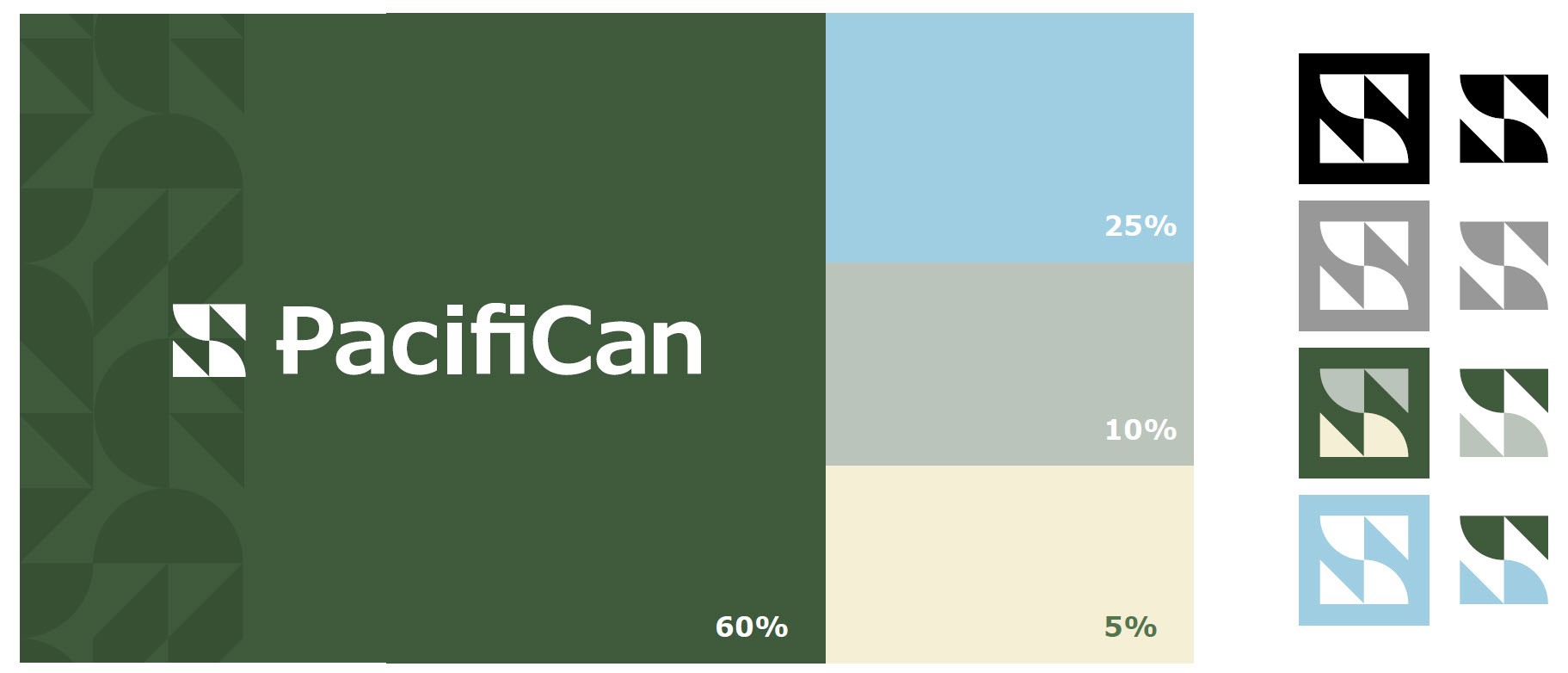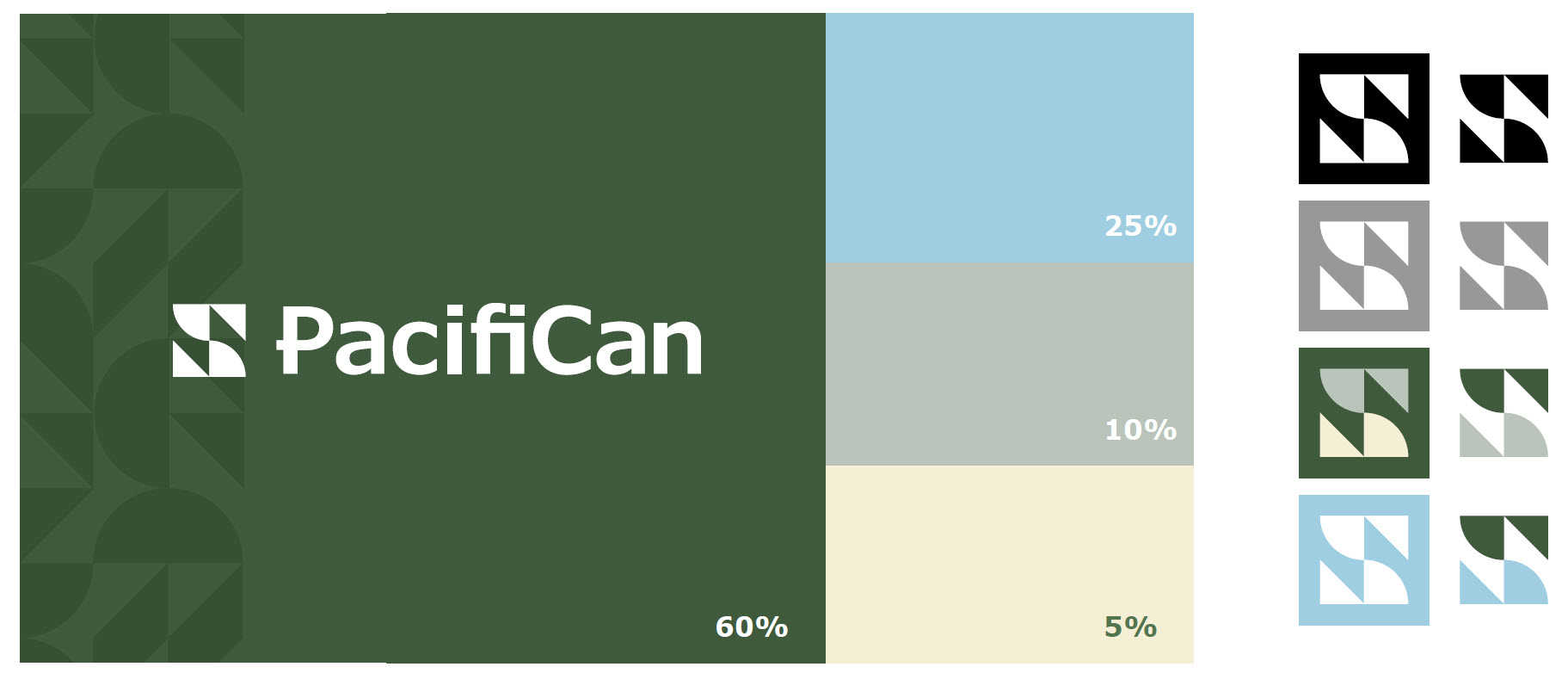



Target audience
| LOCATION | GROUP | LANGUAGE | DATE | TIME (EST) | GROUP COMPOSITION | NUMBER OF PARTICIPANTS |
|---|---|---|---|---|---|---|
| Major Centres Prairies | 1 | English | Apr. 5 | 8:00-10:00 pm | Ukrainian Diaspora | 8 |
| Vancouver Island – British Columbia | 2 | English | Apr. 6 | 9:00-11:00 pm | Environmentally Concerned | 8 |
| New Brunswick | 3 | French | Apr. 7 | 5:00-7:00 pm | Francophones | 8 |
| Greater Toronto Area – Ontario | 4 | English | Apr. 12 | 6:00-8:00 pm | First-Time Home Buyers | 8 |
| Southwestern Ontario | 5 | English | Apr. 13 | 6:00-8:00 pm | Men, aged 18-34 | 8 |
| Lower Mainland – British Columbia | 6 | English | Apr. 13 | 9:00-11:00 pm | General Population | 7 |
| Kitchener and Waterloo Region – Ontario | 7 | English | Apr. 19 | 6:00-8:00 pm | Seniors, aged 55+ | 8 |
| Quebec City – Quebec | 8 | French | Apr. 20 | 6:00-8:00 pm | High Income | 6 |
| Rural Nova Scotia | 9 | English | Apr. 21 | 5:00-7:00 pm | Cost of Living Concerned | 6 |
| Greater Montreal Area – Quebec | 10 | French | Apr. 26 | 6:00-8:00 pm | Women, aged 18-34 | 7 |
| Edmonton – Alberta | 11 | English | Apr. 27 | 8:00-10:00 pm | Low/Middle Income | 8 |
| Outaouais Region – Quebec | 12 | French | Apr. 27 | 6:00-8:00 pm | Low/Middle Income | 6 |
| Total number of participants | 88 | |||||



Concept A is composed of three slides. The first outlines the colour scheme, including a dark ‘forest’ green (60%), light blue (25%), light grey (10%), and beige (5%). In addition, various versions of a logo (all of different combinations of the above colours) are presented. The second slide includes two versions of the same design. Both include a Pacific Economic Development Canada (‘Développement économique Canada pour le Pacifique’ in French) header, accompanied by the Government of Canada wordmark. On the left side, each design features the image of three businesswomen speaking, accompanied by text on the right: “Building a brighter future for tomorrow’s industry leaders”. The design on the left utilizes a white background with faded silver geometric designs and a dark green logo in the bottom-right corner, while the one on the right utilizes forest green, with the same designs in a darker shade of green, and a white logo in the same bottom-right position. In a text box below utilizing the inverse colour schemes of the images above and with ‘PacifiCan’ in the upper left corner, each design version includes the following information: “Fraser River Discovery to receive $150,000 to provide strong post-pandemic recovery and access to Indigenous events and exhibits”. The final slide features the same photo as the second, taking up the entire right side of the page. On the left side is a large section of text (unspecified at this time), accompanied by the same logo and the word ‘PacifiCan’.



Concept B is composed of three slides. The first outlines the colour scheme, including a dark blue (60%), pink (25%), white (10%), and light grey (5%). In addition, various versions of a logo (all of different combinations of the above colours) are presented. The second slide includes two versions of the same design. Both include a Pacific Economic Development Canada (‘Développement économique Canada pour le Pacifique’ in French) header, accompanied by the Government of Canada wordmark. On the left side, each design features the image of three women and one man speaking in a business context, accompanied by text on the right: “Building a brighter future for tomorrow’s industry leaders” and a watermark-type logo. At the top left of each version there is an ‘upside-down L’ geometric shape, in dark blue on the left and pink on the right. The background on the left version is white, while that of the right version is dark blue. In a text box below utilizing the inverse colour schemes of the images above and with ‘PacifiCan’ in the upper left corner, each design version includes the following information: “Fraser River Discovery to receive $150,000 to provide strong post-pandemic recovery and access to Indigenous events and exhibits”. The left-hand portion of the final slide features a cropped image of the photo from the previous slide, featuring only the three women. The right side of the slide features a large portion of text, accompanied by the word ‘PacifiCan’ at the bottom.
| GROUP | DATE | TIME (EDT) | TIME (LOCAL) | LOCATION | COMPOSITION | MODERATOR |
|---|---|---|---|---|---|---|
| 1 | Tues., April 5th | 8:00-10:00 | 6:00-8:00 (CST) 7:00-9:00 (CDT) |
Major Centres Prairies | Ukrainian Diaspora | TBW |
| 2 | Wed., April 6th | 9:00-11:00 | 6:00-8:00 (PDT) | Vancouver Island | Environmentally Concerned | DN |
| 4 | Tues., April 12th | 6:00-8:00 | 6:00-8:00 (EDT) | Greater Toronto Area | First Time Home Buyers | DN |
| 5 | Wed., April 13th | 6:00-8:00 | 6:00-8:00 (EDT) | Southwestern Ontario | Men, aged 18-34 | DN |
| 6 | Wed., April 13th | 9:00-11:00 | 6:00-8:00 (PDT) | Lower Mainland | General Population | TBW |
| 7 | Tues., April 19th | 6:00-8:00 | 6:00-8:00 (EDT) | Kitchener and Waterloo Region | Seniors, aged 55+ | DN |
| 9 | Thurs., April 21th | 5:00-7:00 | 6:00-8:00 (ADT) | Rural Nova Scotia | Cost of Living Concerned | TBW |
| 11 | Wed., April 27th | 8:00-10:00 | 6:00-8:00 (MDT) | Edmonton | Low/Middle Income | TBW |
| LOCATION | CITIES | |
|---|---|---|
| Major Centres Prairies | Cities include: Manitoba: Winnipeg, Brandon. Saskatchewan: Saskatoon, Regina. ENSURE 4 PARTICIPANTS FROM EACH PROVINCE. NO MORE THAN TWO FROM EACH CITY. ENSURE A GOOD MIX OF CITIES ACROSS THE REGION. |
CONTINUE - GROUP 1 |
| Vancouver Island | Cities could include (but are not limited to): Victoria, Nanaimo, Courtenay, Campbell River, Parksville, Duncan, Port Alberni, Lady Smith, Sooke. ENSURE A GOOD MIX ACROSS THE REGION. NO MORE THAN TWO PER CITY. INCLUDE THOSE RESIDING IN LARGER AND SMALLER COMMUNITIES. |
CONTINUE - GROUP 2 |
| Greater Toronto Area | Cities include: City of Toronto, Durham (Ajax, Clarington, Brock, Oshawa, Pickering, Whitby), Halton (Burlington, Halton Hills, Oakville, Milton), Peel (Brampton, Caledon, Mississauga), York (Markham, Vaughan, Richmond Hill, Newmarket, Aurora), Dufferin County (Mono, Orangeville) and Simcoe County. ENSURE A GOOD MIX ACROSS THE REGION. NO MORE THAN TWO FROM CITY OF TORONTO OR PER REGION/COUNTY. INCLUDE THOSE RESIDING IN LARGER AND SMALLER COMMUNITIES. |
CONTINUE - GROUP 4 |
| Southwestern Ontario | Cities could include (but are not limited to): Hamilton, Middlesex County (London, Strathroy, Mount Brydges), Brantford, Oxford County (Woodstock, Ingersoll), Niagara Region (St. Catharines, Niagara Falls, Welland, Fort Erie, Grimsby), Essex County (Windsor, Lakeshore, LaSalle, Leamington). ENSURE A GOOD MIX ACROSS THE REGION. NO MORE THAN TWO PER CITY OR PER REGION/COUNTY. INCLUDE THOSE RESIDING IN LARGER AND SMALLER COMMUNITIES. |
CONTINUE - GROUP 5 |
| Lower Mainland | Cities include: Vancouver, Abbotsford, Burnaby, Coquitlam, Richmond, Surrey, Delta, Langley, White Rock, Chilliwack, Mission Hope, Maple Ridge, New Westminster, North Vancouver, Port Coquitlam, Port Moody. ENSURE A GOOD MIX OF CITIES ACROSS THE REGION. NO MORE THAN TWO PER CITY. INCLUDE THOSE RESIDING IN LARGER AND SMALLER COMMUNITIES. |
CONTINUE - GROUP 6 |
| Kitchener and Waterloo Region | Cities include: Kitchener, Waterloo, Cambridge, Woolwich, Wilmot, Wellesley, North Dumfries. ENSURE A GOOD MIX ACROSS THE REGION. NO MORE THAN TWO PER CITY. INCLUDE THOSE RESIDING IN LARGER AND SMALLER COMMUNITIES. |
CONTINUE - GROUP 7 |
| Rural Nova Scotia | Population = <15,000 Cities could include (but are not limited to): Kentville, Sydney Mines, Amherst, Bridgewater, Yarmouth, Kingston-Greenwood, New Waterford, Antigonish, Windsor, Wolfville. MAX 2 PARTICIPANTS FROM EACH CITY. ENSURE A GOOD MIX ACROSS THE REGION. |
CONTINUE - GROUP 9 |
| Edmonton | City includes: Edmonton. PARTICIPANTS SHOULD RESIDE IN THE ABOVE-NOTED CENTER PROPER. |
CONTINUE - GROUP 11 |
| Less than two years | THANK AND END |
|---|---|
| Two years or more | CONTINUE |
| Don’t know/Prefer not to answer | THANK AND END |
| Less than 5 years | CONTINUE – GROUP 1 |
|---|---|
| 5 to <10 years | |
| 10 to <20 years | |
| 20 to <30 years | |
| 30 or more years | |
| Don’t know/Prefer not to answer | THANK AND END |
| Under 18 years of age | IF POSSIBLE, ASK FOR SOMEONE OVER 18 AND REINTRODUCE. OTHERWISE THANK AND END. |
|---|---|
| 18-19 | IF KITCHENER AND WATERLOO REGION = THANK AND END IF SOUTHWESTERN ONTARIO = GROUP 5 ALL OTHER LOCATIONS, CONTINUE |
| 20 - 34 | |
| 35 - 45 | IF KITCHENER AND WATERLOO REGION = THANK AND END IF SOUTHWESTERN ONTARIO = THANK AND END ALL OTHER LOCATIONS, CONTINUE |
| 46 - 54 | |
| 55+ | IF KITCHENER AND WATERLOO REGION = GROUP 7 IF SOUTHWESTERN ONTARIO = THANK AND END ALL OTHER LOCATIONS, CONTINUE |
| VOLUNTEERED Prefer not to answer |
THANK AND END |
| Male | IF SOUTHWESTERN ONTARIO = GROUP 5 ALL OTHER LOCATIONS, CONTINUE |
|---|---|
| Female | IF SOUTHWESTERN ONTARIO = THANK AND END ALL OTHER LOCATIONS, CONTINUE |
| GROUPE | DATE | HEURE (HAE) | HEURE (LOCALE) | LIEU | COMPOSITION DU GROUPE | MODÉRATEUR |
|---|---|---|---|---|---|---|
| 3 | 7 avril | 17 h-19 h | 18 h-20 h | Nouveau-Brunswick | Population générale | M. Proulx |
| 8 | 20 avril | 18 h-20 h | 18 h-20 h | Ville de Québec | Revenu élevé | M. Proulx |
| 10 | 26 avril | 18 h-20 h | 18 h-20 h | Grande région de Montréal (GRM) | Femmes de 18 à 34 ans | M. Proulx |
| 12 | 28 avril | 18 h-20 h | 18 h-20 h | Région de l’Outaouais | Revenu moyen ou faible | M. Proulx |
| LIEU | VILLES | |
|---|---|---|
| Nouveau-Brunswick | Les villes du N-B. peuvent notamment comprendre : Campbellton-Miramichi, Moncton-Richibucto, Edmundston-Woodstock, Fredericton-Oromocto, Saint John-St. Stephen. ASSURER UNE BONNE REPRÉSENTATION DES VILLES DE LA PROVINCE. PAS PLUS DE DEUX PARTICIPANTS PAR VILLE. RECRUTER DES RÉSIDENTS DE GRANDES ET DE PETITES COLLECTIVITÉS. |
CONTINUER - GROUPE 3 |
| Ville de Québec | Ville de Québec.
LES PARTICIPANTS DOIVENT RÉSIDER DANS LESDITS CENTRES. |
CONTINUER - GROUPE 8 |
| Grande région de Montréal (GRM) | Les villes de la GRM peuvent notamment comprendre : Montréal, Laval, Longueuil, Terrebonne, Brossard, Saint-Jérôme, Blainville, Mirabel, Dollard-des-Ormeaux. PAS PLUS DE DEUX PARTICIPANTS DE LA VILLE DE MONTRÉAL. ASSURER UNE BONNE REPRÉSENTATION DES VILLES DANS CHAQUE LIEU. |
CONTINUER - GROUPE 10 |
| Région de l’Outaouais | Ces villes peuvent notamment comprendre : Gatineau, Les Collines-de-l’Outaouais : Val-des-Monts, Cantley, Le Pêche, Chelsea, Pontiac, L'Ange-Gardien, Notre-Dame-de-la-Salette. ASSURER UNE BONNE REPRÉSENTATION DES VILLES DANS CHAQUE LIEU. |
CONTINUER - GROUPE 12 |
| Autre lieu | - | REMERCIER ET CONCLURE |
| RÉPONSE SPONTANÉE Préfère ne pas répondre | - | REMERCIER ET CONCLURE |
| Moins de deux ans | REMERCIER ET CONCLURE |
|---|---|
| Deux ans ou plus | CONTINUER |
| Ne sais pas/Préfère ne pas répondre | REMERCIER ET CONCLURE |
| Moins de 18 ans | SI POSSIBLE, DEMANDER À PARLER À UNE PERSONNE DE 18 ANS OU PLUS ET REFAIRE L’INTRODUCTION. SINON, REMERCIER ET CONCLURE. |
|---|---|
| 18 - 19 | + GRANDE RÉGION DE MONTRÉAL = GROUPE 10 TOUS LES AUTRES LIEUX, CONTINUER |
| 20 - 34 | |
| 35 - 45 | + GRANDE RÉGION DE MONTRÉAL = REMERCIER ET CONCLURE TOUS LES AUTRES LIEUX, CONTINUER |
| 46 - 54 | |
| 55+ | |
| RÉPONSE SPONTANÉE Je préfère ne pas répondre | REMERCIER ET CONCLURE |
| Homme | + GRANDE RÉGION DE MONTRÉAL = REMERCIER ET CONCLURE TOUS LES AUTRES LIEUX, CONTINUER |
|---|---|
| Femme | + GRANDE RÉGION DE MONTRÉAL = GROUPE 10 TOUS LES AUTRES LIEUX, CONTINUER |



Concept A is composed of three slides. The first outlines the colour scheme, including a dark ‘forest’ green (60%), light blue (25%), light grey (10%), and beige (5%). In addition, various versions of a logo (all of different combinations of the above colours) are presented. The second slide includes two versions of the same design. Both include a Pacific Economic Development Canada (‘Développement économique Canada pour le Pacifique’ in French) header, accompanied by the Government of Canada wordmark. On the left side, each design features the image of three businesswomen speaking, accompanied by text on the right: “Building a brighter future for tomorrow’s industry leaders”. The design on the left utilizes a white background with faded silver geometric designs and a dark green logo in the bottom-right corner, while the one on the right utilizes forest green, with the same designs in a darker shade of green, and a white logo in the same bottom-right position. In a text box below utilizing the inverse colour schemes of the images above and with ‘PacifiCan’ in the upper left corner, each design version includes the following information: “Fraser River Discovery to receive $150,000 to provide strong post-pandemic recovery and access to Indigenous events and exhibits”. The final slide features the same photo as the second, taking up the entire right side of the page. On the left side is a large section of text (unspecified at this time), accompanied by the same logo and the word ‘PacifiCan’.



Concept B is composed of three slides. The first outlines the colour scheme, including a dark blue (60%), pink (25%), white (10%), and light grey (5%). In addition, various versions of a logo (all of different combinations of the above colours) are presented. The second slide includes two versions of the same design. Both include a Pacific Economic Development Canada (‘Développement économique Canada pour le Pacifique’ in French) header, accompanied by the Government of Canada wordmark. On the left side, each design features the image of three women and one man speaking in a business context, accompanied by text on the right: “Building a brighter future for tomorrow’s industry leaders” and a watermark-type logo. At the top left of each version there is an ‘upside-down L’ geometric shape, in dark blue on the left and pink on the right. The background on the left version is white, while that of the right version is dark blue. In a text box below utilizing the inverse colour schemes of the images above and with ‘PacifiCan’ in the upper left corner, each design version includes the following information: “Fraser River Discovery to receive $150,000 to provide strong post-pandemic recovery and access to Indigenous events and exhibits”. The left-hand portion of the final slide features a cropped image of the photo from the previous slide, featuring only the three women. The right side of the slide features a large portion of text, accompanied by the word ‘PacifiCan’ at the bottom.